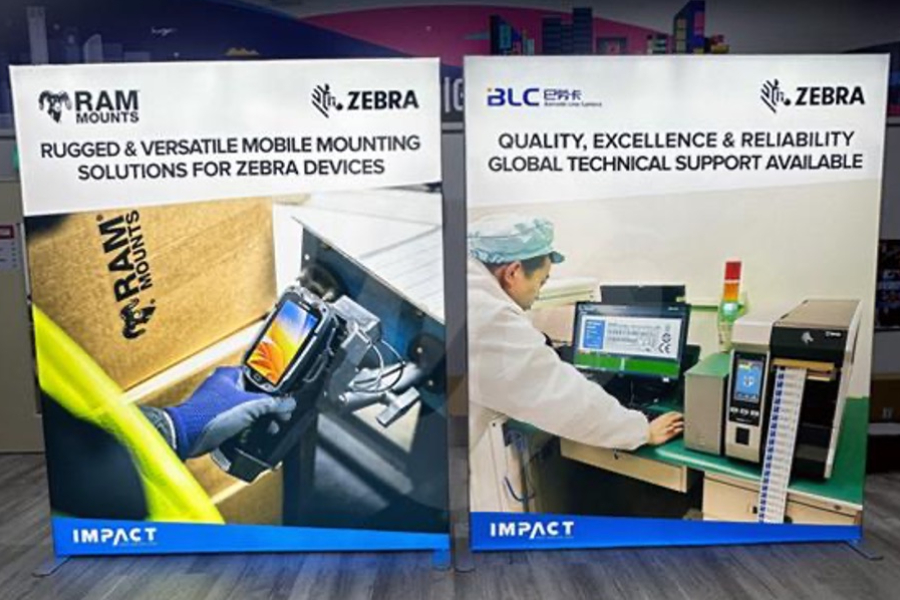
When planning an exhibition, trade show, or corporate event, one of the most crucial decisions you'll face is choosing between custom and modular displays. Each option offers unique advantages and potential drawbacks, making the right choice dependent on your specific needs and objectives. Understanding the differences between these two types of displays can help you make a more informed decision, ensuring that your presentation stands out and effectively communicates your brand message.
Custom displays: tailored to perfection
Custom displays are precisely what they sound like—tailored to your exact specifications. These displays offer unparalleled flexibility and creativity, allowing you to create a unique and immersive experience for your audience. Whether you have a specific theme, colour scheme, or brand message in mind, a custom display can bring your vision to life.
One of the primary advantages of custom displays is their ability to fully align with your brand's identity. Every element, from the design to the materials used, can be customised to reflect your company’s values and aesthetics. This level of personalisation ensures that your display is not only eye-catching but also memorable.
However, the benefits of custom displays come with a few considerations. They are generally more expensive and time-consuming to produce compared to modular displays. This investment is often justified for larger companies or high-stakes events where making a lasting impression is crucial. For smaller businesses or more frequent events, the cost and production time may be prohibitive.
Custom displays also tend to be more complex to set up and dismantle. This complexity can be a downside if you have limited time or resources for event preparation. Nevertheless, for companies that prioritise brand-specific, high-impact presentations, the advantages of custom displays often outweigh these challenges.
Modular displays: flexibility and convenience
Modular displays, on the other hand, are pre-designed systems that can be easily configured and reconfigured to suit different spaces and event requirements. These displays are often more budget-friendly and can be adapted for various uses, making them an excellent option for businesses that participate in multiple events throughout the year.
One of the most significant advantages of modular displays is their versatility. Because they are designed to be easily assembled and disassembled, they can be reused and reconfigured to fit different booth sizes and layouts. This adaptability not only saves time and money but also allows you to keep your display fresh and engaging from one event to the next.
Modular displays are also typically more straightforward to transport and store. Their lightweight and compact design make them ideal for businesses that need to ship displays to different locations or have limited storage space. Additionally, the ease of setup and teardown means that you can spend less time worrying about logistics and more time focusing on engaging with potential customers.
While modular displays offer many advantages, they do come with some limitations. Because they are pre-designed, there is less room for customisation compared to custom displays. While you can choose from various configurations and accessories, the overall look and feel of the display may be less unique or tailored to your brand. This could be a drawback if you’re looking to create a highly personalised experience.
Which option is right for you?
The decision between custom and modular displays ultimately comes down to your specific needs, budget, and event goals. If you’re aiming to make a big splash at a high-profile event, and you have the budget to support it, a custom display may be the best choice. The ability to create a one-of-a-kind experience that perfectly aligns with your brand can make a significant impact.
On the other hand, if you’re looking for a more cost-effective and versatile option that can be used across multiple events, a modular display is likely the better fit. Its flexibility, ease of use, and adaptability make it an excellent choice for businesses that participate in frequent events or have varying display needs.
For companies that find themselves somewhere in the middle, a hybrid approach could be the solution. By incorporating custom elements into a modular system, you can achieve a balance between personalisation and practicality. This approach allows you to enjoy the benefits of both options, creating a display that is both unique and versatile.
When considering your display options, it’s also important to think about other elements of your presentation, such as pull-up banner printing or your event backdrop. These components can complement your display and help create a cohesive and impactful brand presence.
No matter which option you choose, working with a professional display provider like New Wave Display can help ensure that your project runs smoothly from start to finish. Whether you're in need of the best poster printing service for your event or require expertise in both custom and modular displays, they can guide you through the process and help you create a display that meets your needs and exceeds your expectations.
Conclusion
Whether you opt for a custom display or a modular system, the key is to choose a solution that aligns with your brand’s objectives and enhances your presence at any event. For expert advice and high-quality display solutions, consider partnering with New Wave Display, your trusted source for all your event and exhibition needs.




